Every modern person at least once in his life has found the problem of parasites in the body.The amount and variety of parasites, which, in the literal sense of the word, cannot live without us, are simply huge.The parasites in the human body use it as a source of food and habitat until they run out completely, but without giving their presence.
The parasites are microscopic sizes or can grow up to several meters long, but even in this case, their vital activity in the body cannot always be felt.A person, as a rule, does not feel them and does not even know his presence within himself.Meanwhile, they are able to live in a human body for years and even decades, causing irreparable damage.
Parasites in the human body represent a serious danger and represent a great threat to human health, as they violate the work of internal organs and systems, cause a failure to work on the immune system and interfere with the complete assimilation of useful substances, vitamins and minerals.In some cases, the situation is so serious that it may even lead to death.
Types of relationships between organisms
In nature, there are several types of relationships between organisms that have a diverse effect on each other.
The impact of one species in another may have neutral or positive and negative.
In addition, there are different combinations of such relationships.Distinguish:
- symbiosis;
- Neutralism;
- antibiosis.
Symbiosis is a form of relationships between two organisms, of which both benefit.
Neutralism is a type of biological connection, which consists of dwelling two organisms in a territory, but at the same time they are not related to each other and do not directly affect themselves.
Antibismo is an antagonistic type of biological relationship, in which one type of population limits the possibilities of another, adversely affecting.One of the most negative types of antibishes is parasitism.
Parasitism and parasites
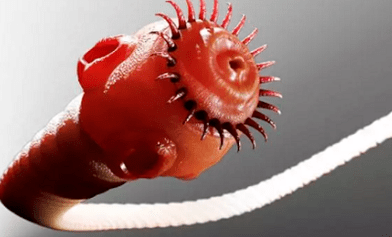
Parasitism is a form of antibiotic in which representatives of one species use the body of another species as a temporary or constant environmental environment and a source of nutrients.
Biological organizations that live at the expense of another organism are called parasites.
Parasites do not kill their owner, but for a long time they use it as a source of food and habitat.
Parasites include:
- parasitic worms;
- pathogenic bacteria;
- protozoa;
- Mushrooms;
- Virus.
Host bodies can be:
- bacteria;
- protozoa;
- plants;
- animals;
- Human.
In the development process, parasites pass various stages of egg and larvae development to adults (sexually mature, invasive), which indicates their long life and needs to change from 2 to 3 owners.
Parasites Classification
All parasites are divided into bond and optional.
Forcing parasites outside the host's body dies or exists in an inactive state.For example: viruses.They carry an exclusively parasitic lifestyle, that is, they depend completely on the owner and activate their activities within it.
Optional parasites carry a parasitic lifestyle, but if necessary, they can exist in an absolutely normal way in the external environment.For example: pathogenic mushrooms and bacteria.
By the nature of the relationship with the host body, they share:
- true parasites;
- false parasites;
- Super parasites.
True parasites are the same binding parasites for which a parasitic lifestyle is the only form of survival.However, there are parasites that can be linked (constant) and optional (temporal).For example: lice, fleas, intestinal helminths.
False parasites - voluntarily living organisms, which, in case of accidentally entering the body, are able to live in it for some time and harm it.For example: larvae in a room fly in a person's gut.
Super parasites are parasites that live in other parasites.For example, bacteria and viruses in other parasitic insects living in other organisms.
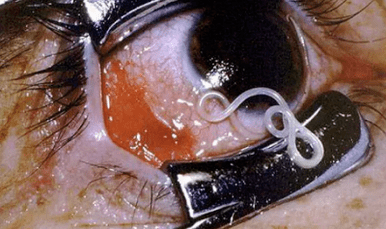
Depending on the duration of interaction with the host's body, they distinguish:
- constant parasites;
- temporary parasites.
Constant parasites are organisms that conduct their entire life cycle in their body - the owner, placing the larvae in it.For example: Ascarides, tapeworms, lice.
Temporary parasites;Live and eat at the expense of the owner at a particular stage of development.For example: larvae of a fly-turbt and a imago (adult insects)-in fleas and mosquitoes.
At the host body site, the parasites are divided into:
- ectoparasites;
- Endoparasites.
Ectoparasites are organisms that live on the skin of the host body.For example: lice, fleas, ticks.
Endoparasites are organisms located within the host body.Endoparasites are divided into:
- internal parasites;
- fabric parasites;
- intracellular.
Intra -Captures parasites are organisms located in cavities that connect to the external environment, for example: Ascaris, Vlasov -Received in the human gut.
Parasites of a type of organisms located in host body closed cavities and tissues, for example: for example, liver bacon, tape worms.
Intracellular parasites are located in body cells - the owner, for example: malaria plasmodia, toxoplasma.
In terms of distribution in the environment, parasites are:
- Curly, found everywhere;
- Tropical, which is common only in hot tropical climate.
According to biological and epidemiological characteristics, parasites are divided into:
- GEOGELMINTS- These are parasites that initially go through a stage of development in the human body and then in the external environment (eg, earth);
- Biogelminter- Parasites in which the development cycle occurs not only in the human body, but also in the organisms of other creatures.A person, as a rule, is the final owner and sometimes intermediate.
- Contact the helminthsThey are distinguished from the body of the host already mature or medium -meat, as a result of which it is possible to repeat its infection or infection of someone else (self -self -kick, reinvasia).
How parasites fall into the human body
There are many favorable factors that contribute to the entry of parasites into the human body:

- Dirty hands;
- animal hair;
- poorly cooked products (food factor);
- Contact factor with the interview house;
- transmissible;
- Percuting.
Dirty hands are the main source of parasitosis infection.There are several diseases called "dirty -hands diseases".The larvae of worms, falling first to the skin of the hands and then in the mouth, cause characteristic symptoms of the gastrointestinal tract.The path of transmission of these infections is called fecal-oral.Thus, helminths with contact helminthiasis fall into our body.For example, ascarid eggs enter the human body through dirty hands, poorly washed vegetables, fruits, berries, vegetables and are also scattered to flies.
The animals and their wool are a source of ascarid and liphyli with worms.For example, for a long time, which has fallen from the animal's wool, it keeps vitality (up to 6 months) and, falling into rugs, things, bedding, toys and children's hands, penetrate the food tract.
In addition, through wet breath, dogs and cats are able to dispel parasitic eggs at a distance of 3 to 5 meters.In addition, there are fleas on dogs and cats, which also tolerate eggs of worms.
The food method of parasites infection is performed:
- through poorly washed vegetables and fruits;
- Poorly cooked foods (most often meat);
- Infected water.
For example, an incorrectly cooked barbecue, homemade or home -made lard can infect a person with tricelelosis and echinococcus, and poorly cooked dry fish or caviar can cause an option for an opistochiasis and a broad ribbon.
The transmissive method of infection occurs using insects that suck blood, for example: ticks, mosquitoes, lice, fleas, insects.
CONTACT - The domestic path of infection is performed through an infected person or animal, when contacting or using uses ordinary domestic items.
The percuting method of infection occurs while bathing in reservoirs or in contact with infected soil.The larvae penetrate the body through the mucous membranes or human skin during contacts with infected water or soil.
Device resources
Almost all parasites are highly adaptable to survival.There are several factors that contribute to their high vitality:
- A long life expectancy.For example, helminths live in the human body for years and sometimes exactly as much as the owner lives.
- Helminth eggs are able to persist and not collapse in the external environment for decades.
- The parasite development stage also contributes to your life expectancy.He passes all the stages of development, starting with the egg, continuing the larva and the change of the owner, in case of lack of nutrients.
- The ability of parasites to cause a state of immunodeficiency in the owner, which allows us to penetrate pathogenic agents from the outside, as well as "incite" sleeping internal infections.
- The helminths that fit the gastrointestinal tract of a person produce anti -enzymes, allowing them to pass their own death, but at the same time violates the normal process of eating and causing toxic - allergic reactions in their host: asthma, hives, dermatitis.
- Parasites' invulnerability is associated with the exchange of genetic information during sexual reproduction, which leads to the stability of its heterogeneous population.
- The wide vitality of helminths in many habitats: soil, water, animals, plants.
- The lack of effective immunoprophylax methods, as parasites are able to suppress or modify the immune response of the host's body.
How to identify parasites in the body
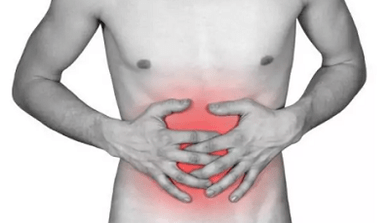
As a rule, a person asks this question when his health is very hard impaired.It is common for a person to discard the problem in his early stage until he develops in a serious form and affects his well.
As parasites are divided by the body habitat - the owner into endoparasites and ectoparasites, symptoms are divided into internal and external.
Ectoparasites are characterized by a certain activity, which manifests the following symptoms:
- rash;
- itch;
- burning;
- Hyperemia;
- pain (if it were a bite);
- The presence of a wound at the site of a bite.
Detecting endoparasites is much easier.The following actions are taken for this:
- Visual identification (if there is penetration out through the skin);
- Microscopic examination.
The discovery of ectoparasites is a difficult task, because in the process of evolution, "dependents" have adapted to survival while disguising and without betraying themselves, they lead destructive work in the host's body.After all, a person lives, for example, with worms from his appearance, and the stages of their development can lead from several months to a decade.So how to determine the presence of parasites in the body?
External and internal manifestations
As parasites differ in a long life expectancy and multiply actively in the human body, they cause recurring and long -term chronicles.
External manifestations of parasite activity include:
- rash;
- itch;
- burning;
- Hyperemia;
- feverish condition;
- Quincke's edema.
It is important to know that the degree of allergy development depends on many factors:
- parasite location in the body;
- parasite contact with vital tissues and organs;
- the amount of toxins produced.
The following symptoms include violations in the internal invasion body:
- disorders in the work of the gastrointestinal tract (nausea, diarrhea, belching);
- weight fluctuations associated with lack of nutrients and a decrease in appetite;
- Desire for sweets due to metabolic disorders and general weakening of the body;
- Chronic fatigue syndrome, which manifests itself by general fatigue, drowsiness, in some cases insomnia, impaired concentration and memory;
- constant headaches caused by body weakness and intoxication;
- Grinding teeth in a dream (bruxism) manifests itself especially in children;
- swelling of the members;
- Nervous disorders and psychic disorders, as parasites can cause depression and irritability;
- paroxysmal cough;
- muscles and joint pain;
- painful paleness of the skin;
- Skin lesions (dermatitis, eczema, acne and acne).
It is especially important to know the general symptoms observed with intestinal parasitic invasion.
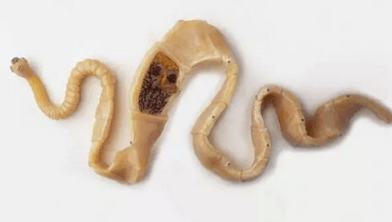
Violations in the digestive tract, which are manifested by the following symptoms:
- intestinal cramps;
- irritable bowel syndrome;
- flatulence;
- constipation or diarrhea;
- Change the color of stools;
- itching in the anus;
- Visual detection of helminths;
- The presence of worms in the gag.
Since worms can reach significant sizes in the body, they are able to physically complicate the progress of stool and violate the work of other organs, for example the bile ducts.
Parasites can cause violations in the work of a specific organ or system.
The most common violations are:
- Anemia.
- Central nervous system lesions.
- Abscess in the liver.
- Purulent gallbladder and pancreas inflammation.
- Fruits in the work of immunity, until the development of autoimmune reactions.
- Disorders in the operation of the respiratory system.
- Joint diseases.
Parasitic diagnosis
All of the above symptoms cannot always confirm the presence of parasites in the body as these symptoms can be observed with many diseases.
You can establish the presence of parasites in the human body when examining feces.However, this method is not reliable, because parasites larvae cannot always be seen through a microscope or jump.Also, not all parasites are many eggs.
To detect parasitic larvae in the stool, it is necessary to take a fecal analysis up to 8 to 10 times.But if, in this case, the analysis has shown nothing, but the doctor has doubts, several serological examinations are prescribed, which will help detect helminth antibodies that appear in the blood a few weeks after parasites infection.
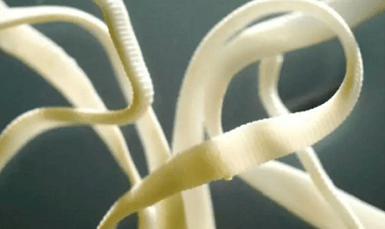
There are other methods to identify the “dependents” the SO SO string test.A rope with a capsule is inserted into the gut through the nose and removes it after four hours, along with the samples received.
Another method is a colonoscopy during which the expert considers the condition of the inner surface of the colon using a special probe.
Experts have found that the most common parasites are helminths.Moreover, all are very viable and fertile, and their goal is to destroy their master and extract as much benefits to themselves.
How to remove parasites from the human body
It is difficult to get rid of parasites, but it is possible.It is important to prioritize: it is necessary not only to know how to get rid of parasites, but also to understand what is the process of treatment itself.It is performed in three directions:
- The destruction of parasites in all stages of existence.That is, it is necessary to destroy not only adults, but also the larvae and their eggs.
- Normalization of the work of all body organs and systems.
- Body Restoration.
To satisfy the three items above, it will help modern medicines based on plant components that the expert will prescribe.
Such medications are modern medications and have a certain therapeutic effect.Using these medicines in the complex allows you to combine their therapeutic effect and get a wonderful result.
The dose and combination of medicines are performed based on:
- parasitic invasion stages;
- Patient's general condition;
- the availability of complications of a particular body;
- Gravity of the course of the disease.
The priority of anti -helmintic medicines is based on:
- efficiency;
- security;
- The possibility of combining various medications for the best therapeutic effect.
Treatment with popular remedies is a very effective way to get rid of parasites.Most of the time, grass cleaning tea is used, which neutralizes the harmful effect of parasites, cleans the liver and gallbladder.
They prepare tea as follows: Take one tablespoon of the following plants each: oak bark, spine, worm wood, tansy.Then one tablespoon of a mixture of plants is spilled with 500 ml of boiling water and left on a closed plate at night.In the morning, with an empty stomach, 100 grams of the resulting tincture are drunk.Treatment continues for two to three weeks.
Pumpkin seeds are also very effective in the fight against parasites.To get rid of the parasites, 300 grams of pumpkin seeds are taken, they are clean from the shell, but at the same time leave as transparent film as possible, involving the seeds.The seeds should be consumed in the morning with an empty stomach.This recipe eliminates not only parasites, but also improves the functioning of intestines, stomach, liver and gallbladder.





















